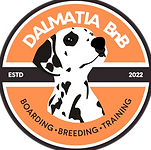Choosing the Right Leashes and Collars for Your Puppy
- Rebecca Price
- May 13
- 3 min read

Introduction
Selecting the perfect leash and collar for your puppy is a crucial step in ensuring their safety and comfort. With so many options available, it can be overwhelming to make the right choice. This blog post will guide you through the different types of collars and leashes, how to fit them properly, and the basics of leash training to set you and your puppy up for success.
Types of Collars
1. Flat Collar:
Description: A basic, everyday collar with a buckle or snap closure.
Use: Ideal for holding ID tags and everyday use.
Pros: Easy to use, widely available, and comfortable for most puppies.
2. Martingale Collar:
Description: A collar with a limited-slip design that tightens slightly when the puppy pulls.
Use: Great for training and preventing escape.
Pros: Provides better control without choking, ideal for breeds with narrow heads.
3. Harness:
Description: A piece of equipment that fits around the puppy's chest and shoulders.
Use: Distributes pressure evenly, reducing strain on the neck.
Pros: Encourages pulling if you want to train your dog to track or hunt. Prevents trachea collapse in certain breeds, offers more control, and is suitable for puppies with respiratory issues.
4. Head Collar:
Description: A collar that fits around the puppy's nose and neck, similar to a halter for horses.
Use: Helps control head movement and reduces pulling.
Pros: Effective for strong pullers, provides excellent control.
Types of Leashes
1. Standard Leash:
Description: A basic leash, typically 4-6 feet long, made of nylon, leather, or other materials.
Use: Suitable for everyday walks and training.
Pros: Provides good control, durable, and widely available.
2. Retractable Leash:
Description: A leash with a mechanism that allows it to extend and retract, giving your puppy more freedom to explore.
Use: Suitable for well-behaved puppies in open, safe areas.
Pros: Offers flexibility and freedom, easy to use.
3. Adjustable Leash:
Description: A leash with adjustable lengths, typically featuring multiple loops or clips.
Use: Versatile for various activities and training.
Pros: Can be shortened or lengthened as needed, multifunctional.
4. Training Leash:
Description: A long line (often 20-30 feet) or short line (4-6 feet), used for training recall and obedience. I prefer Biothane material as it is easy to keep clean and sanitary
Use: Ideal for teaching commands and allowing more freedom in a controlled environment.
Pros: Provides ample space for training, great for large open areas.
Fitting Collars and Leashes Properly
1. Measuring for Collars:
Step 1: Use a flexible tape measure to measure around your puppy's neck, ensuring a snug but comfortable fit.
Step 2: Add 1-2 inches to the measurement for the correct collar size.
Step 3: Ensure you can fit two fingers between the collar and your puppy's neck.
2. Adjusting Harnesses:
Step 1: Place the harness on your puppy, making sure it fits snugly around the chest and shoulders.
Step 2: Adjust the straps to ensure a comfortable fit without causing chafing or restricting movement.
Step 3: Check for any signs of discomfort or irritation and readjust as needed.
.png)




Comments